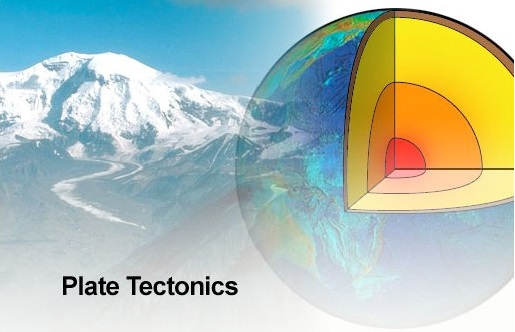Unit 8: Plate Tectonics
Unit 8: Plate Tectonics

Unit 8: Plate Tectonics
 Unit 8: Plate Tectonics
Unit 8: Plate Tectonics
Plate tectonics is a scientific theory that describes the movement and interactions of the lithospheric plates that make up the Earth's surface. It provides a framework for understanding various geological processes, including the formation of mountains, earthquakes, volcanoes, and the distribution of continents and oceans.
Key concepts of plate tectonics include:
Lithospheric Plates: The Earth's outermost layer, called the lithosphere, is divided into several large and small tectonic plates. These plates are composed of the crust and the uppermost portion of the mantle. There are major plates, such as the North American Plate and the Pacific Plate, as well as numerous smaller plates.
Plate Boundaries: Plate boundaries are the zones where tectonic plates interact. There are three main types of plate boundaries:
- Divergent Boundaries: Plates move away from each other, leading to the formation of new crust through volcanic activity and the creation of mid-ocean ridges.
- Convergent Boundaries: Plates move toward each other, resulting in subduction (where one plate is forced beneath another) or continental collision. Subduction zones are associated with deep-sea trenches, volcanic arcs, and earthquakes.
- Transform Boundaries: Plates slide past each other horizontally, causing lateral motion along faults. Transform boundaries are often associated with strike-slip faults and earthquakes.
Driving Forces: Plate tectonics is driven by mantle convection—the movement of heat within the Earth's mantle—and gravitational forces. Heat from the Earth's interior causes material in the mantle to rise, flow laterally, and sink back down in a cyclical process known as mantle convection. This movement exerts forces on the overlying lithospheric plates, causing them to move.
Geological Features: Plate tectonics explains the formation and distribution of various geological features, including mountain ranges, ocean basins, volcanic arcs, and rift valleys. For example, the Himalayas were formed by the collision of the Indian Plate with the Eurasian Plate, while the Mid-Atlantic Ridge is a divergent boundary where new oceanic crust is created.
Plate tectonics is a unifying theory in Earth science, providing a comprehensive explanation for the dynamic nature of the Earth's surface and its geological features. It has revolutionized our understanding of Earth's history, evolution, and ongoing processes, and it continues to be a key focus of scientific research and exploration.
Vocabulary
Lesson Reading

